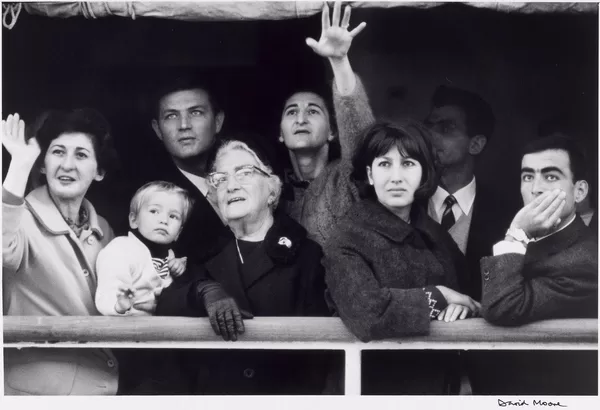This extraordinary photographic exhibition at the National Gallery of Victoria should be remembered as one of the most important held in the country, and the most far reaching so far this century.
This landmark exhibition features photographs from across the 200-year period since the invention of photography in the 19th century. Besides examining the technical and artistic aspects of the photographic medium, this exhibition tells the history of photography from an Australian perspective.
More than 270 leading international photographers are featured including Man Ray, Cindy Sherman, Henri Cartier-Bresson, Dorothea Lange, Wolfgang Tillmans, Gilbert & George and Nan Goldin, alongside Australian photographers Max Dupain, Olive Cotton, Harold Cazneaux, Athol Shmith, Rennie Ellis, Mervyn Bishop, David Moore, Carol Jerrems, Polly Borland, Destiny Deacon and Darren Sylvester.
Four years in the making and featuring some of the most iconic photographs ever made alongside contemporary approaches to the photographic medium, Photography: Real & Imagined is the largest survey of the NGV’s Photography collection in the gallery’s history.
Photography: Real & Imagined is at The Ian Potter Centre, NGV Australia, from 13 October 2023 to January 2024, and is FREE admission.
There are a few juxtapositions at play in this exhibition: vintage and contemporary; photojournalism and fine art; reportage and surrealism; documentary and photo-montage; the myriad genres and periods, the personalities of the photographers and their influences, approaches, backgrounds, signature styles, etc.
It will be interesting to see how the NGV curators develop the thematic elements of such a vast collection as they create rooms which explore subject matter such as light, place and environment, consumption, conflict, community, and death.
In a usual photographic context, we wouldn’t expect to see a 1936 documentary photograph by the legendary Dorothea Lange next to a 2017 fine art image by Ethiopian artist Girma Berta who uses only an iphone camera.
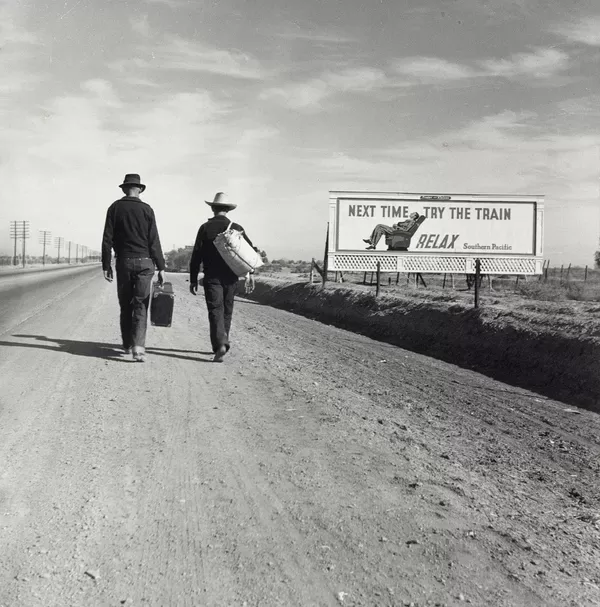

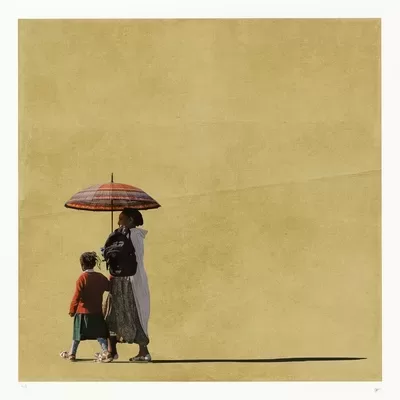

Dorothea Lange, Towards Los Angeles, California 1936; printed c. 1975 gelatin silver photograph 39.6 x 39.1 cm (image); 40.8 x 50.5 cm (sheet) National Gallery of Victoria, Melbourne Purchased, 1975 © Library of Congress, FSA Collection © Library of Congress Photo: Predrag Cancar / NGV
Girma Berta, Untitled IV, 2017 from the Moving shadows series 2017 inkjet print, ed. 4/4 89.8 x 90.0 cm (image) 99.8 x 100.0 cm (sheet) National Gallery of Victoria, Melbourne Bowness Family Fund for Photography, 2018 © Girma Berta Photo: Predrag Cancar / NGV
Lange purposefully uses the background to become an important component of her ironic story-telling document, whereas Berta eliminates the background entirely to transform his image into fine art.
Lange made this photo in the same year as the famous ‘Migrant Mother‘ image for the U.S. government’s Farm Security Administration (FSA) program, while Berta currently photographs for his popular Instagram page.
If the viewer didn’t know the back story, genre or that eighty years separated each photograph, and only saw the light and shadows, mode of transport, and even the economic condition of the subjects, the similarities compliment rather than conflict, and the two photographs can happily co-exist.
Through twenty-one thematic sections, the large-scale Photography: Real & Imagined exhibition explores the proposition that a photograph can be grounded in the real world, recording, documenting and reflecting the world around us; or be the product of imagination, storytelling and illusion; and on occasion operate in both realms.
Another aspect of the NGV exhibition is an obvious comparison between the very best of Australian photographers and their international counterparts. How do you think the Australians compare?
From Pictorialism to Modernism Photography: Real & Imagined
Pictorialism has a photographer manipulating an image in some manner to ‘create’ an image rather than simply recording a scene or subject. Pictorial photography was a rejection of purely technical photos and sought to elevate photography that was considered ‘art’.
Soft focus, dreamy subject matter with painted backdrops and printing on matte paper were all used by photographic artists consciously imitating painting as an art form.
Australian photographers embraced Pictorialism, the first international photographic art movement, during the 1890s. Photographic journals were published showcasing and informing local photographers, including Australian Photographic Journal (1892), and Australasian Photo-Review (1894).
While not in this exhibition, John Kauffmann (1864–1942) is often cited as an early catalyst for Pictorialism on his return to Australia from studying photography in Europe. Pictorialism influenced Harold Cazneaux, Frank Hurley, Cecil Bostock, Henri Mallard, Rose Simmonds and Olive Cotton, plus the dozens of photographic portrait studios established around the turn of the century.
The essay Australian Pictorial Photography ~ Seeing The Light by Gael Newton, former senior curator photography at the National Gallery of Australia, delves deeper into Pictorialism in Australia.
The Photographic Society of New South Wales was established in Sydney in 1894 as Pictorialism gained popularity. Two members of this society were Olive Cotton and Harold Cazneaux who both started in Pictorial photography and by the 1930s were increasingly exhibiting the influence of Modernism.
From the early 1920s right up until the 1950s, a new generation of modernists were disputing Pictorialism’s emphasis on the beautiful and the ideal, replacing the soft-focus works with sharp angles, strong light, action and energy. Photographers began to produce works with sharp focus, emphasising formal qualities, and exploiting rather than obscuring the camera as an essentially mechanical and technological tool.
Olive Cotton (11 July 1911 – 27 September 2003) was an Australian pictorialist-turned-modernist photographer working in Sydney during the 1930s and 1940s. Cotton’s photographic prowess was recognised as equal to her first husband, the famous photographer Max Dupain, who will also be featured at the NGV.
Olive Cotton and Max Dupain were an Australian version of famous photographic couples such as Robert Capa and Gerda Taro, Edward Weston and Margrethe Mather, Edward Weston and Tina Modotti, or Man Ray and Alice Prin, (better known as Kiki de Montparnasse, see below), and together they created bold, distinctive and quintessentially Australian photographs during the 1930s and 1940s.
After Cotton divorced Dupain in the mid-1940s, she moved to Cowra with her second husband and two children onto a farm with no running water, telephone or electricity, and she virtually disappeared. Her work was largely forgotten until an exhibition in Sydney in 1985 and a major retrospective at the Art Gallery of New South Wales in 2000 re-established her reputation as one of Australia’s great photographers. NGV have nine photographs by Olive Cotton in their collection.
Amongst the Australian photographers featured in the Photography: Real & Imagined exhibition are Harold Cazneaux and Rennie Ellis who have vastly different styles, not surprising considering that these two images were made sixty years apart:
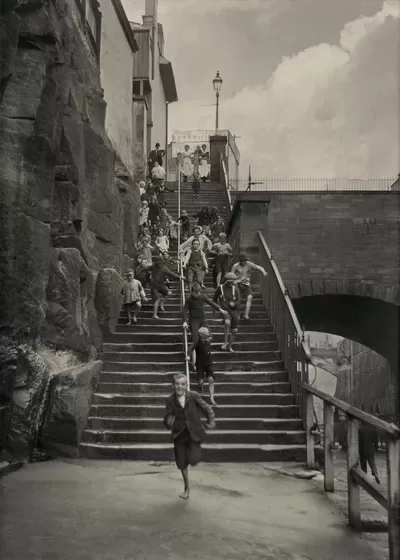

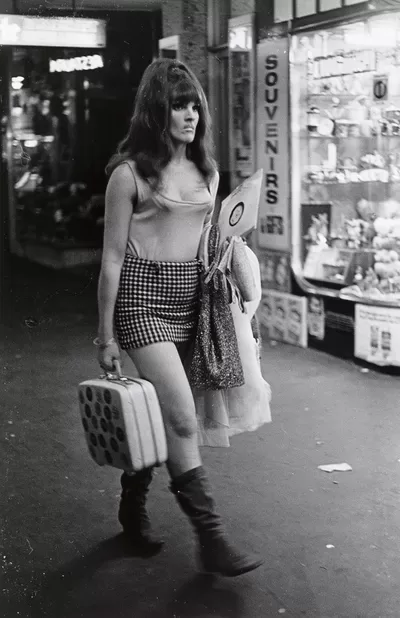

Left: Harold Cazneaux – Fairy Lane steps (1910).
Right: Rennie Ellis, Between strips, Kings Cross 1970–71; printed 2000 from the Kings Cross series 1971 gelatin silver photograph 37.1 x 24.1 cm (image) 40.3 x 30.4 cm (sheet) National Gallery of Victoria, Melbourne Purchased, 2005 © Rennie Ellis Photographic Archive Photo: Selina Ou / NGV
Harold Pierce Cazneaux (30 March 1878 – 19 June 1953) was an Australian pictorialist photographer; a pioneer whose style had an indelible impact on the development of Australian photographic history. The NGV has 23 photographs by Cazneaux, and these are worth studying by today’s students.
Street Photography: Real & Imagined
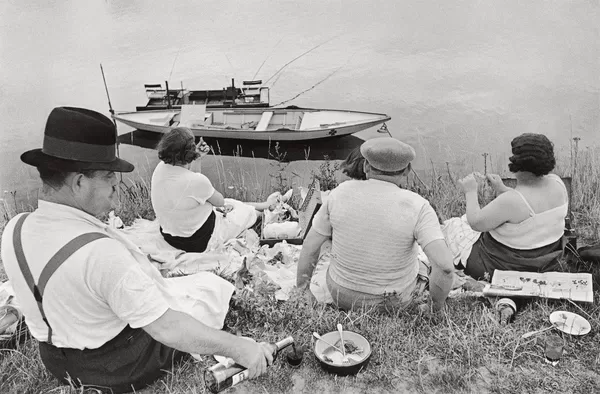

Henri Cartier Bresson Juvisy, France 1938; printed 1990s gelatin silver photograph 29.1 x 43.9 cm (image) National Gallery of Victoria, Melbourne Purchased NGV Foundation, 2015
© Henri Cartier-Bresson / Magnum Photos Photo: Nicholas Umek / NGV
Henri Cartier-Bresson is considered the grandfather of documentary and street photography.
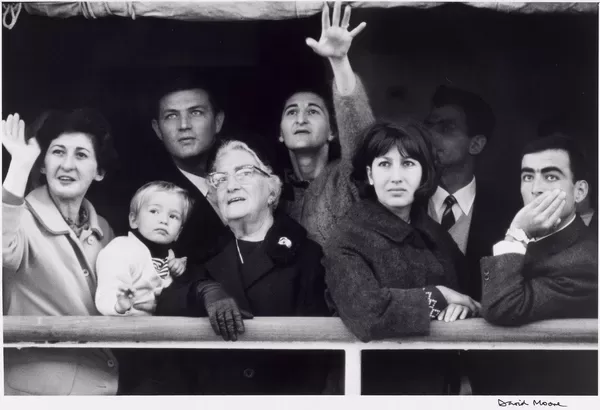

Australian photography legend David Moore‘s ‘Migrants arriving in Sydney‘ from 1966 reminds us of Cartier-Bresson’s style of documentary – the full frame filled with larger than life, in your face reality of their subject matter.
Both photographers arranged the every-day subject as a work of art so that the viewer’s eye leisurely and easily travels around the photograph, reading the picture.
Hope, wonder, expectation, concern, and even despair, are written in the facial expressions in Moore’s remarkable photograph. We wonder what they are thinking.
Moore’s prolific photography career covered the realism of his documentary and commercial work through to experimentation with abstract photography while building an extraordinary body of work of more than 200,000 film negatives.
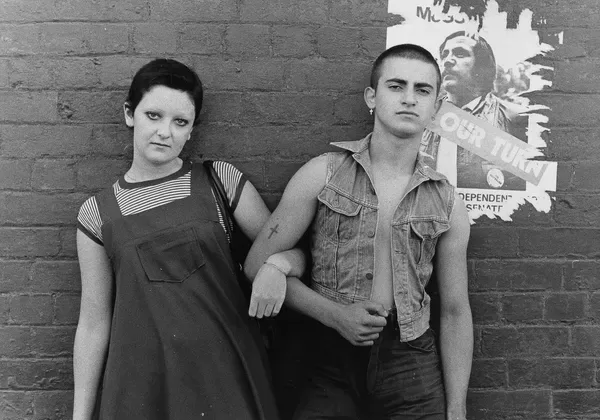

Carol Jerrems, Sharpies, 1976
Carol Jerrems (14 March 1949 – 21 February 1980) was an Australian photographer and filmmaker whose work with street people and the disadvantaged emerged during the 1970s, just as photography itself was re-emerging as an art form.
The National Gallery of Victoria were early in recognising Jerrems’ photography. In 1971, NGV curator Jennie Boddington acquired 43 Jerrems’ photos and in 1974, NGV held an exhibition of her incredible 1968 The Alphabet Folio which was her assignment for a Diploma of Art and Design, majoring in Photography at Prahran College of Advanced Education in Melbourne.
Another Prahran alumnus, former Daddy Cool guitarist Ross Hannaford, remembers Jerrems:
“We were a bit scared of Carol. She was real serious. Carol was the first feminist I ever met. I remember she gave me a lift home once. I said ‘Thanks, baby’. She said ‘Come here. You don’t call me baby.’ Got a bit of a lecture.”
“I’d watch Carol shooting and I didn’t realise what she was up to. ‘What are you taking all that rubbish for?’ But when you look back it seemed to encapsulate the times and the life around you. Her work took on a significance later on.”
Ross Hannaford
Vale Street (1975) by Carol Jerrems became the most valuable Australian photograph when a print, one of nine known prints, sold for $122,000 ($100,000 hammer price) at a Sotheby’s auction in 2019.
Jerrems’ work is highlighted in She Persists: Perspectives on Women in Art & Design published by the National Gallery of Victoria.
Other books by Jerrems are out of print, but occasionally second-hand copies become available:
Up Close: Carol Jerrems with Larry Clark, Nan Goldin and William Yang and A Book About Australian Women by Virginia Fraser and Carol Jerrems.
Former Curator of Photography at the National Gallery of Australia, Helen Ennis notes a distinct change in mood in Carol Jerrems photos.
“The early photos between 1972 and 1975 were all about optimism. There’s a huge amount of energy in them. It was all bound up with the excitement about the Whitlam government and this desire for change. But from 1976 I don’t think they were anywhere near as optimistic.”
Helen Ennis
Carol Jerrems focused on documentary photography while a student before developing a non-exploitative strategy as she embedded herself within the counter-culture of the 1970s, constructing positive images of people, particularly indigenous, street youths and women.
Jerrems photographs sometimes look candid as if in a documentary style, however she spent considerable time collaborating with her models and constructing the images to achieve the natural ‘look’ she was searching for.
Staged photo-journalism … real and imagined reportage
The next two photographs, by Sydney Morning Herald photographer Mervyn Bishop and Associated Press photographer Joe Rosenthal, were staged for the camera, illustrating the fluid space between the real and imagined.
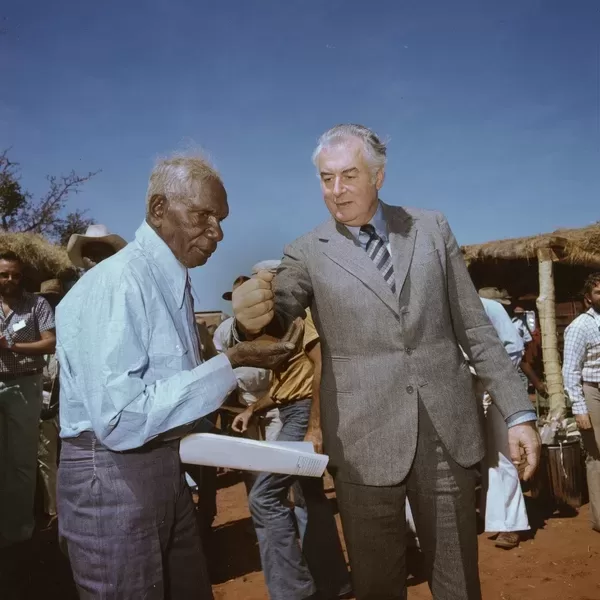

Mervyn Bishop, Prime Minister Gough Whitlam pours soil into hand of Traditional Land Owner (Gurindji) Vincent Lingiari, Northern Territory (Wattie Creek) 1975; printed 1990
Mervyn Bishop’s important 1975 photograph of then Prime Minister of Australia, Gough Whitlam, pouring sand into the open palm of Gurindji Elder Vincent Lingiari captured the historic meeting where Lingiari received the crown lease of his ancestral lands. After years of campaigning for land rights, Lingiari said “Now we can all be mates”.
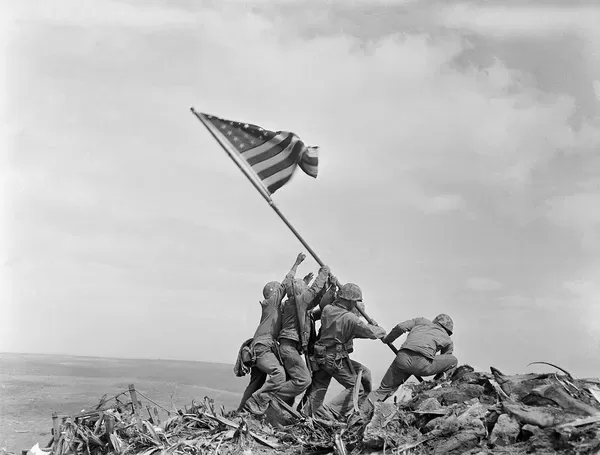

Also in the exhibition is the famous Pulitzer Prize winning World War II photograph by Joe Rosenthal, Raising the flag on Iwo Jima, showing American marines as they raise their country’s flag over the Japanese Island.
On Feb. 25, 1945, two days after Rosenthal made the photo with his bulky Speed Graphic camera, Raising the flag on Iwo Jima appeared on the front page of more than 200 sunday newspapers across the USA, raising the nation’s spirits during a bloody time of the war.
Recognizing the importance of the picture as one of the most widely recognised and published photos of the 20th century, the Associated Press relinquished rights to Raising the flag on Iwo Jima, placing it in the public domain.
Surreal and Avante Garde Photography: Real & Imagined
The masters of imagination and illusion were the surrealists, dada and avante garde photo artists who are well represented in this exhibition by Man Ray, André Kertész, Ilse Bing and Dora Maar.
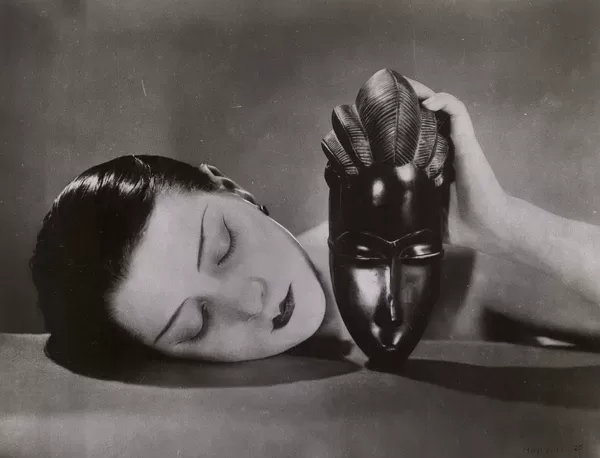

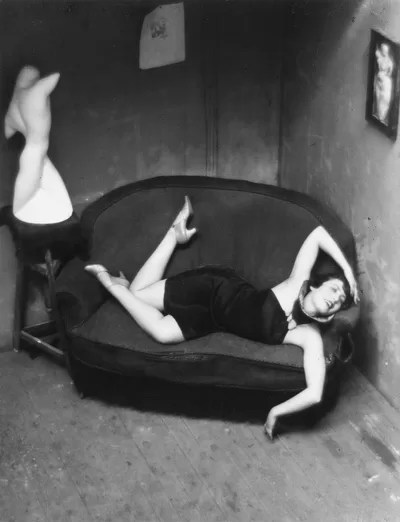

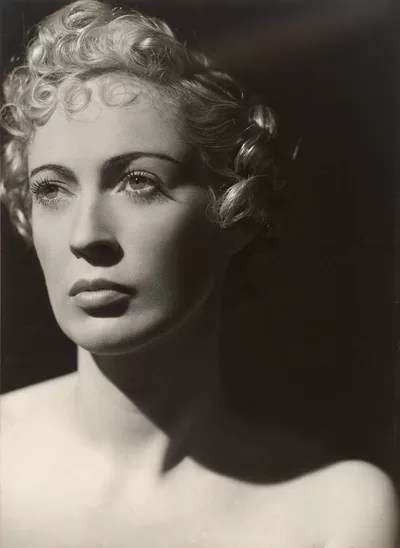

Man Ray, Kiki with African mask, 1926 gelatin silver photograph 21.1 x 27.6 cm (image); 22.1 x 28.5 cm (sheet) National Gallery of Victoria, Melbourne Purchased through The Art Foundation of Victoria with the assistance of Miss Flora MacDonald Anderson and Mrs Ethel Elizabeth Ogilvy Lumsden, Founder Benefactors, 1983 © MAN RAY TRUST / ADAGP, Paris. Licensed by Copyright Agency, Australia Photo: Helen Oliver-Skuse / NGV
André Kertész, Satiric Dancer, Paris 1926; printed c. 1972 gelatin silver photograph 22.5 x 17.3 cm (image and sheet) National Gallery of Victoria, Melbourne Purchased, 1973 © Estate of André Kertész, courtesy of Higher Pictures, New York Photo: Christian Markel / NGV
Dora Maar, Untitled (Study of Beauty), 1936 gelatin silver photograph 33.0 x 24.1 cm National Gallery of Victoria, Melbourne Bowness Family Fund for Photography, 2021 © Estate of Dora Maar / DACS, All Rights Reserved / Copyright Agency, Australia Photo: Predrag Cancar / NGV
Dora Maar (22 November 1907 – 16 July 1997), born Henriette Theodora Markovitch, was a French photographer, painter, and poet. A romantic partner of Pablo Picasso, he painted her in his Portrait of Dora Maar and Dora Maar au Chat.
Man Ray, Kiki, Picasso, Maar and the entire cubist movement were all influenced by African masks during the 1920s, so it is gratifying to see NGV give a nod to that important influence on the entire art world in Man Ray’s Kiki with African mask.
Ilse Bing’s surrealist inspired photograph, “Salut de Schiaparelli” (Lily Perfume), Paris, 1934, was commissioned by Elsa Schiaparelli to launch her new perfume Salut and will feature in the NGV exhibition. Ilse Bing (23 March 1899 – 10 March 1998) was a German commercial photographer who produced black and white avant-garde images during the 1920s and 1930s.
Fashion & Advertising Photography: Real & Imagined
The exhibition also presents fashion and advertising photography, including key examples by Lilian Bassman, and Horst P. Horst. These images showcase a world of designer fashion and high-end products, which set a standard in advertising that continues today.
Also included in NGV’s exhibition is work by Athol Shmith (19 August 1914 – 21 October 1990), a Melbourne-based studio portrait and leading fashion photographer who also began his photographic career in pictorialism before transitioning to an art deco modernism.
In 1968 Athol Shmith was instrumental in founding the photographic department at the National Gallery of Victoria, the first in Australia and among the first at public galleries worldwide. Jennie Boddington was appointed as its first curator and she commissioned Shmith, as NGV council member (1972–75), to travel to Britain and France to acquire international photographs for the collection and establish a partnership between the NGV and Bibliothèque Nationale de France which led to numbers of Australian photographers’ work entering their collection. NGV has 403 photographs by Athol Shmith.
In 1971 he left his studio to take on a new role as head of the Photography Department at Prahran College of Advanced Education. His support assisted the careers of students whom he closely mentored such as Sue Ford, Bill Henson, Carol Jerrems, Rod McNicol, Phil Quirk, Andrew Chapman and Christopher Koller.
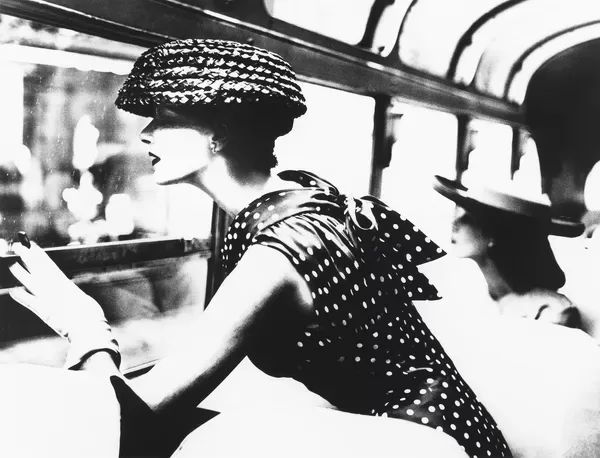

Lillian Bassman‘s ‘More fashion mileage per dress’, Barbara Vaughn, Harper’s Bazaar, New York 1956 gelatin silver photograph 43.1 × 60.9 cm (image) 50.8 × 56.5 cm (sheet)
National Gallery of Victoria, Melbourne Gift of Krystyna Campbell-Pretty AM and Family through the Australian Government’s Cultural Gifts Program, 2023
© Estate of Lillian Bassman Photo: Selina Ou / NGV
New York-based Bassman got her start as an art director at Harper’s Bazaar. Bassman’s black and white fashion work appeared in Harper’s Bazaar from 1950 to 1965.
Bassman’s signature style was classical Pictorialism, dreamy black-and-white portraits of gracefully posed models imitating a candid moment, and her post-production repertoire in the darkroom included cropping, toning, bleaching, and using gauzes and tissues to manipulate images until they took on the look of mysterious fashion illustrations.
Bassman accentuated the high contrasts between light and dark, the graininess of the finished photos, and the geometric placement and camera angles of the subjects.
In the 1970s Bassman’s interest in fashion photography waned and she threw out her life’s work – 40 years of film negatives and photographic prints. A forgotten bag filled with hundreds of images was discovered more than 20 years later, when Bassman was in her 70s, and her fashion photographic work began to be re-appreciated by the art world.
A numbered print from an edition of 25 of ‘More fashion mileage per dress’ sold at Christie’s for USD $21,420 with an estimate $4000-6000 which shows the esteem that the photography world has for this image, and Lillian Bassman’s body of work.
Contemporary Photography: Real & Imagined
Through to the current day, Photography: Real & Imagined presents contemporary photographers of the 21st century including Zanele Muholi, Richard Mosse and Alex Prager.
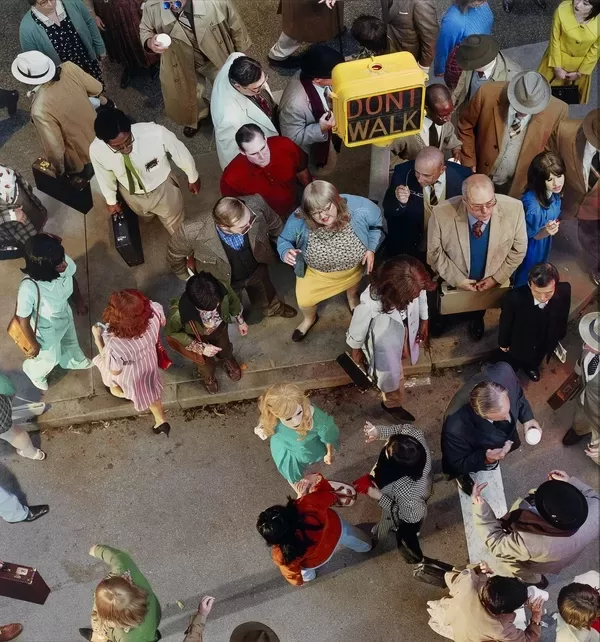

Alex Prager, Crowd #11 (Cedar and Broad Street) 2013
Everything works in this photograph: the unusual camera angle, the Don’t Walk sign with people walking all around it, the dividing line between the walkers and the don’t walkers, the stance and expressions on the central characters, how none of the characters are interacting with each other, the diverse and intriguing characters around the edges which invite the eye to travel around, investigate and read the image.
However, there is more to the photo than meets the eye …
“It’s very directed before we start the shoot. I’ll put people in position and give them some kind of character I want them to be. I will give the overall group a direction right before we start shooting, then I let people do their thing. I want it to be as natural as possible. I want it to feel staged to create that sort of isolation and disconnected communication but these aren’t reenactments of real crowds”
Alex Prager
Does it matter that Prager’s photograph is completely staged, literally photographed on a set? You can leave a comment below.
Cindy Sherman’s celebrated Renaissance styled self-portrait, Untitled 1988 (not shown), from her “History Portraits” series will be on display in the NGV. Sherman was in Rome when she began this series of “History Portraits” (1988–90), acting as model, stylist, and photographer to create a suite of intentionally peculiar images to explore the representation of individuals in Old Master and other historical styled portrait paintings.
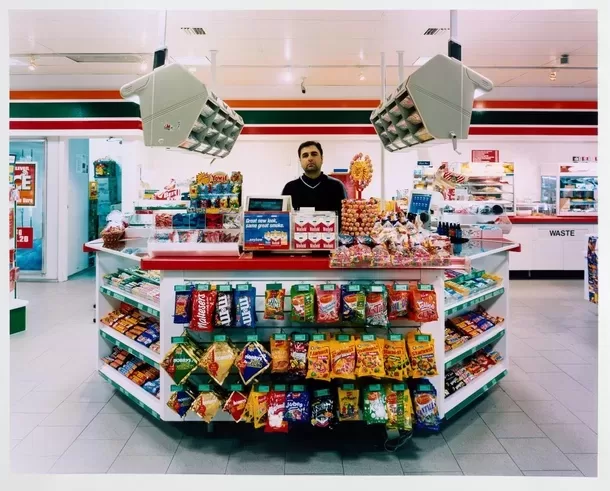

Selina Ou, Convenience, 2001 from the Serving you better series 2001 type C photograph 111.6 × 140.2 cm (image) 126.9 × 156.5 cm (sheet) National Gallery of Victoria, Melbourne Purchased with funds arranged by Loti Smorgon for Contemporary Australian Photography, 2005 © Selina Ou, represented by Sophie Gannon Gallery, Melbourne Photo: Garry Sommerfeld / NGV
Melbourne-based photographer Selina Ou‘s Convenience invokes comparisons to Andreas Gursky (not in this NGV exhibition) and his multi-million dollar large format photos of retail stores, such as in his 99 Cent II Diptychon.
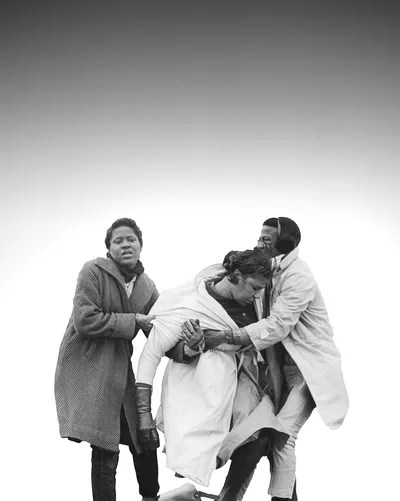



Hank Willis Thomas, Amelia Falling, 2014 photographic print, mirror and glass 166.0 x 135.0 cm
National Gallery of Victoria, Melbourne Bowness Family Fund for Photography, 2017 © Hank Willis Thomas. Courtesy of the artist and Jack Shainman Gallery, New York Photo: Christian Markel / NGV
Hank Willis Thomas is known for incorporating recognizable symbols and imagery from American pop culture into his works to explore themes of racial identity, history, consumerism, and the media.
Zanele Muholi Ntozkhe II (Parktown) 2016 from the Somnyama Ngonyama series 2015–16 gelatin silver photograph 99.0 x 74.0 (image) National Gallery of Victoria, Melbourne Bowness Family Fund for Photography, 2017 © Zanele Muholi, courtesy of the artist, Yancey Richardson, New York, and STEVENSON, Cape Town/Johannesburg Photo: Predrag Cancar / NGV
Photo-Montage: Real & Imagined
Highlighting an area of focused collecting for the NGV, the exhibition recognises the work of women practicing in the early 20th century, including Barbara Morgan whose acclaimed photo montage City shell, 1938, shows an unexpected view of the then recently completed Empire State Building.
This author is not a huge fan of photo montage that disrupts the viewers eye from traversing the image or unnecessarily distracts the eye from the subject, but then my photo-montage studies were grounded in the surrealists, if anything can be actually be grounded in surrealism, and I’m a collector of Shepard Fairey’s skilful use of lines which flow around and connect the various elements of an image.
Such is contemporary photography … the lines do flow, but not in the direction that my eyes want to travel. Such is the joys and otherwise of viewing a photographic exhibition of this scope, there will be favourites. There will be surprises and there will be something for everyone to debate.
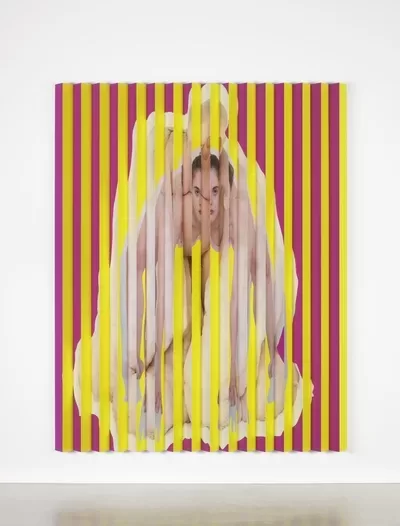

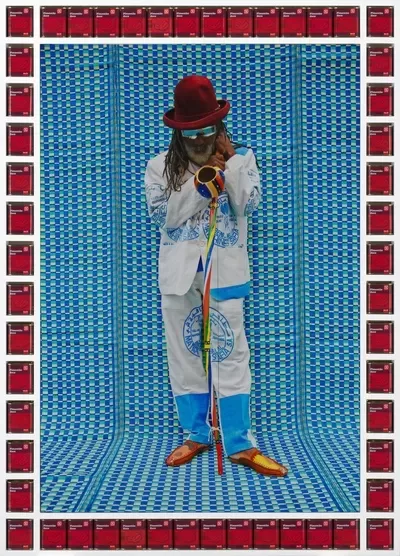

Left: Polly Borland, Untitled 2018 from MORPH series 2018 inkjet print on rice paper on lenticular cardboard 216.0 × 172.7 × 13.0 cm National Gallery of Victoria, Melbourne Purchased, Victorian Foundation for Living Australian Artists, 2019 © Polly Borland Photo: Nicholas Umek / NGV
Right: Hassan Hajjaj Master Cobra Mansa 2013 metallic inkjet print, timber frame, cans 76.2 x 111.8 cm (image); 95.0 x 135.0 x 7.0 cm (framed) National Gallery of Victoria, Melbourne Orloff Family Charitable Trust, 2019 © Hassan Hajjaj Photo: Predrag Cancar / NGV
Photography: Real & Imagined at National Gallery of Victoria
Also on display will be the oldest photographic work in the NGV Collection, an early 19th century portrait by Englishman William Henry Fox Talbot, one of the inventors of the medium, as well as examples of daguerreotypes, unique images on silver plated copper sheets that are amongst the earliest forms of photography.
The exhibition is accompanied by a major publication – the most ambitious book published on the NGV Photography Collection, generously supported by the Bowness Family Foundation.
The publication comprises essays from NGV Senior Curator of Photography, Susan van Wyk, Susan Bright and David Campany; alongside texts by Curator of Photography, Maggie Finch and external authors from Australia, Europe, North America and Southeast Asia.
Regular introductory talks for students are held on weekdays during term times, and free drop-by guided tours each Thursday and Sunday at 10.30am during the exhibition period.
Photography: Real & Imagined is from 13 October – 4 February 2024 at The Ian Potter Centre: NGV Australia, Fed Square, Melbourne. Entry is free. Further information is available via the NGV website: NGV.MELBOURNE
If you’ve seen the exhibition or have a comment regarding our review, please leave your comment below.
Other articles, stories & reviews on our website
- Man Ray’s love-hate relationship with Hollywood
- Fake Photo: Manipulated photography before Photoshop
- This Working Photographer’s Life: British / Australian Rob Walls
- Wildlife Photographers in conversation at Australian National Maritime Museum
- Landscape photography in colonial Australia
- 10 photography exhibitions that defined Australia
- Photographer William Yang documents Sydney gay scene in 1970s
- Jesus Christ Superstar Australian Cast – Theatre Photography
- Where is Little Pattie now
- Was Peter Lik’s world record $65 million “Phantom” photograph a good deal?
- John Berger on August Sander, Henri Cartier-Bresson & Paul Strand
- Is it a fake photo Prince Andrew, Virginia Giuffre, and Ghislaine Maxwell
- Gregory Halpern “somewhere between the documentary and fine art”
- How I shot the Queen ° CHOGM 2002 ° Official Queen’s Portrait
Please leave a comment below

